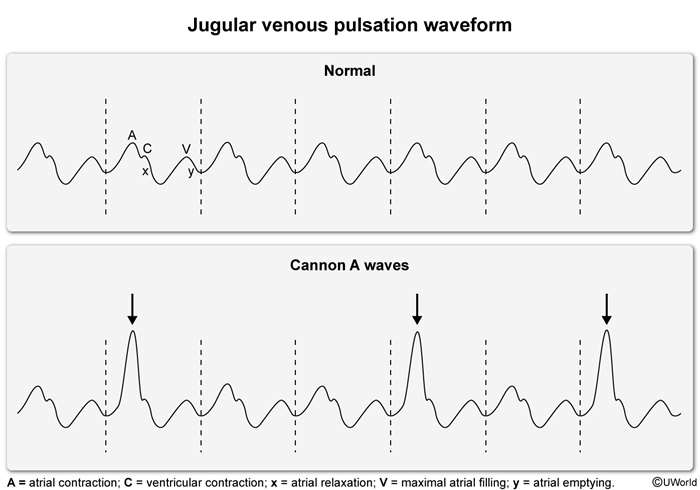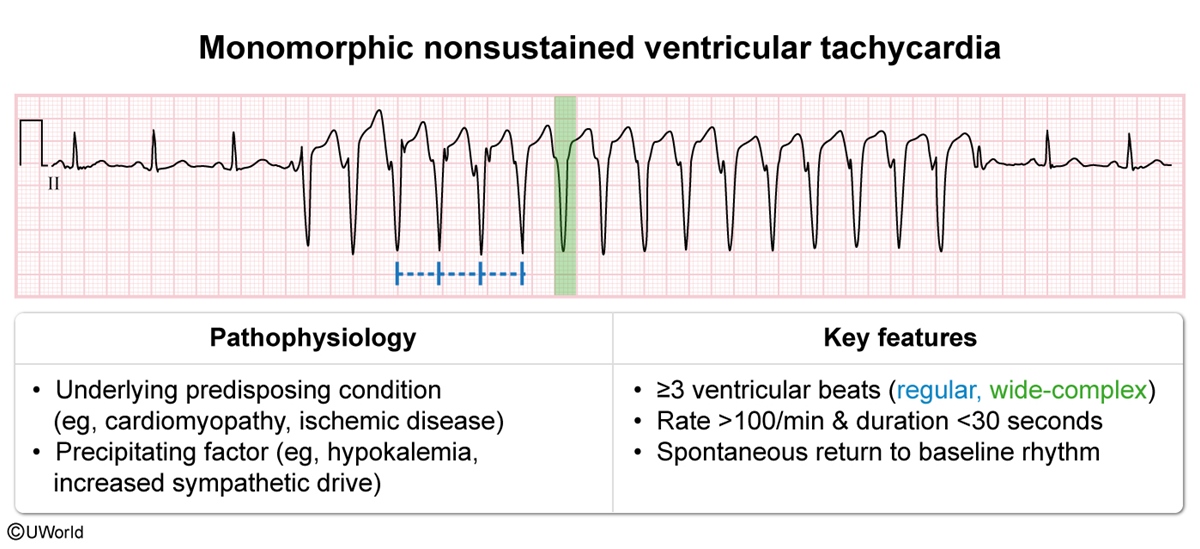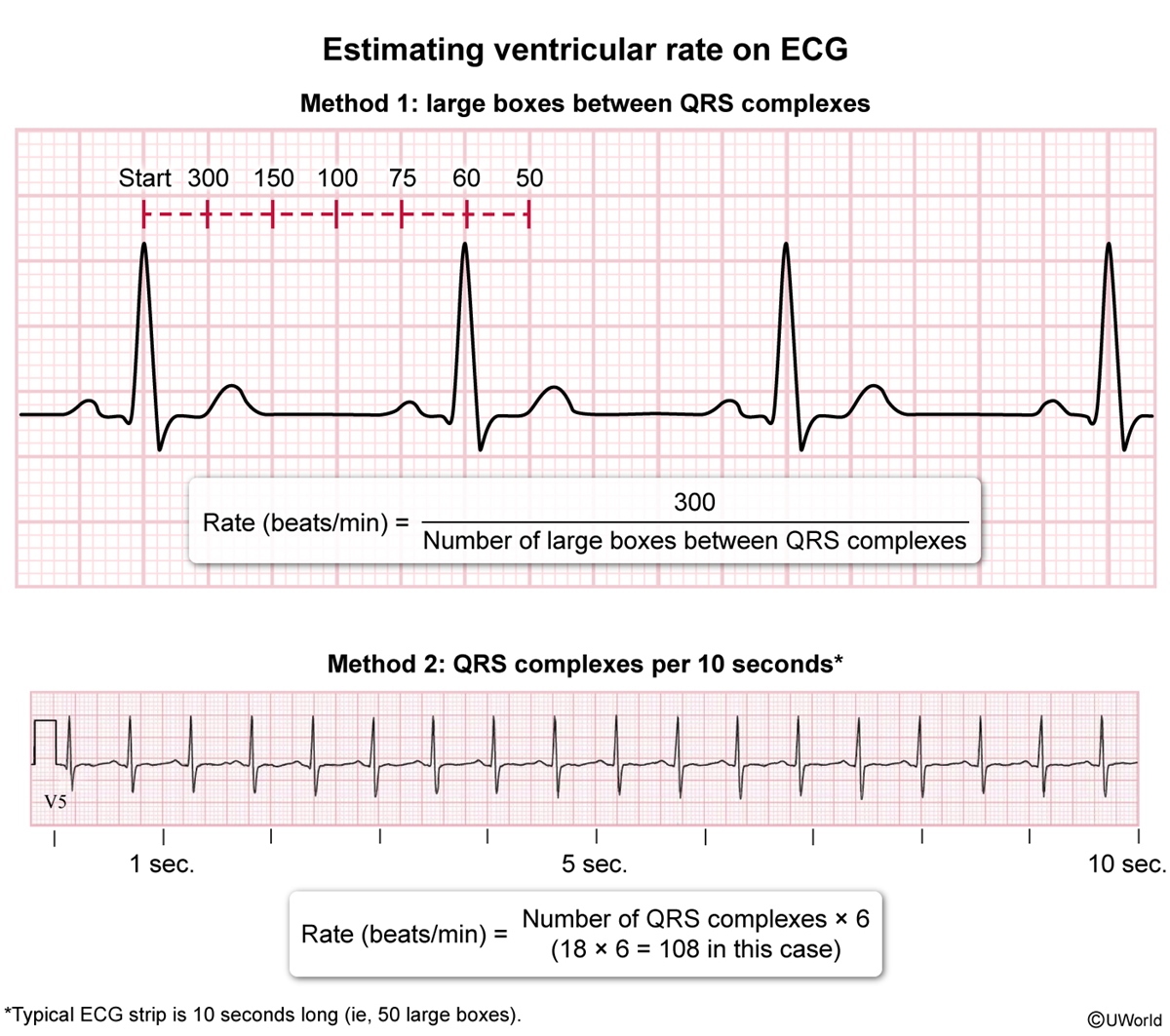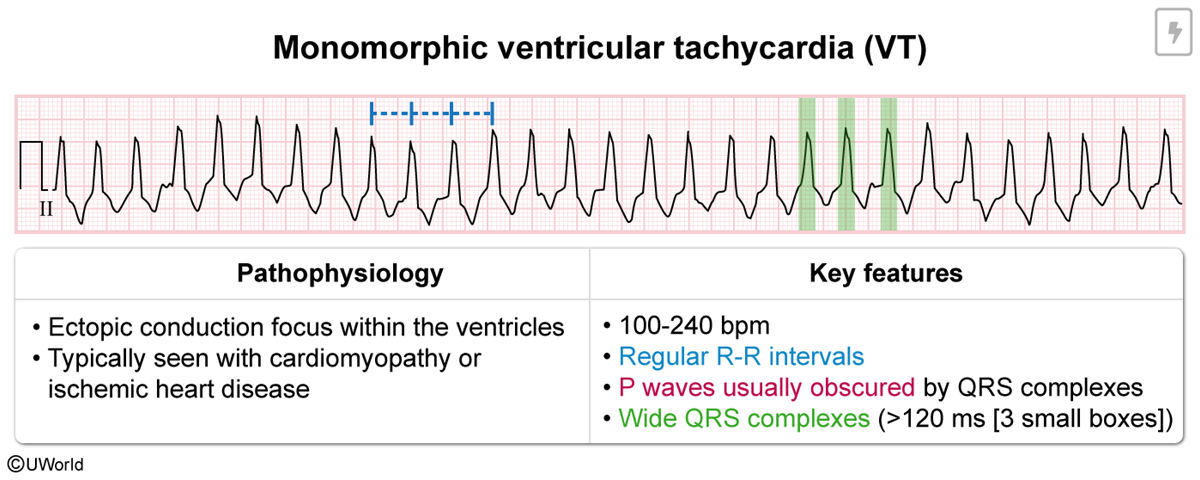Ventricular Tachycardia And Ventricular Fibrillation
Article Sections
Introduction
Ventricular tachycardia (VT) is a rapid arrhythmia caused by abnormal electrical activity that originates in the ventricles. Compared with supraventricular tachycardia (described in a separate article), VT is far more likely to cause hemodynamic collapse and sudden cardiac arrest; VT and ventricular fibrillation account for nearly all arrhythmia-related sudden cardiac deaths (SCDs). VT requires prompt recognition and management to reduce morbidity and mortality.
Types and pathophysiology
VT typically occurs paroxysmally, with abrupt onset and offset.
Sustained vs nonsustained VTThe arrhythmia is considered nonsustained or sustained based on duration:
- Nonsustained VT is defined as ≥3 consecutive ventricular beats with a rate >100/min and with spontaneous return to the baseline rhythm within 30 seconds.
- Sustained VT is VT lasting ≥30 seconds or causing hemodynamic collapse (ie, syncope or cardiac arrest) within 30 seconds.
Continue Learning with UWorld
Get the full Ventricular Tachycardia And Ventricular Fibrillation article plus rich visuals, real-world cases, and in-depth insights from medical experts, all available through the UWorld Medical Library.
Figures



